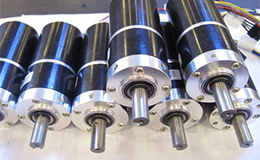



 2020.07.27
2020.07.27
When installing the gearbox, the following precautions should be taken:

1. The reducer should be firmly installed on a stable horizontal foundation or base, and the oil in the oil drain groove should be able to be discharged, and the cooling air circulation should be smooth. The foundation is unreliable, which can cause vibration and noise during operation, and lead to damage to bearings and gears. When there are protrusions in the transmission connecting parts or when gears or sprockets are used for transmission, protective devices should be considered for installation. When the output shaft bears a large radial load, a reinforced type should be selected.
2. Install the device according to regulations to ensure that personnel can easily access the oil gauge, vent plug, and drain plug. After installation, the accuracy of the installation position and the reliability of the tightening of each fastener should be comprehensively checked in order. After installation, it should be able to rotate flexibly. The reducer adopts oil pool splash lubrication. Before operation, the user needs to remove the screw plug of the vent hole and replace it with the vent plug. According to different installation positions, open the oil level plug screw to check the height of the oil level line. Add oil from the oil level plug until the lubricating oil overflows from the oil level plug screw hole. After confirming the correctness of the oil level plug, perform a no-load test run for no less than 2 hours. The operation should be smooth, without impact, vibration, noise, or oil leakage. Any abnormalities should be promptly eliminated. After a certain period of time, the oil level should be checked again to prevent possible leaks caused by the casing. If the ambient temperature is too high or too low, the lubricating oil grade can be changed.
3. When installing the reducer, attention should be paid to aligning the transmission center axis, and the error should not exceed the compensation amount of the coupling used. Good alignment can prolong the service life and achieve ideal transmission efficiency.
4. When installing transmission components on the output shaft, it is not allowed to strike them with a hammer. Usually, assembly fixtures and internal threads on the shaft end are used to press the transmission components in with bolts, otherwise it may cause damage to the internal parts of the reducer. It is best not to use rigid fixed couplings, as improper installation of such couplings can cause unnecessary external loads, leading to early damage to bearings and even fracture of the output shaft in severe cases.



 Online Service
Online Service
